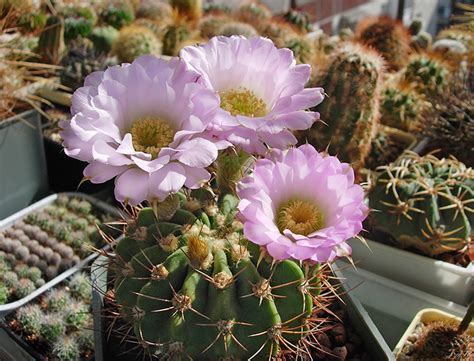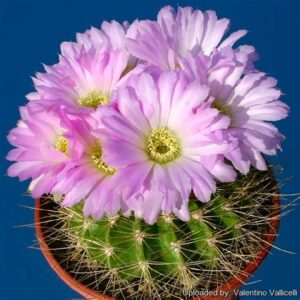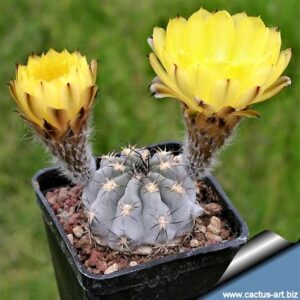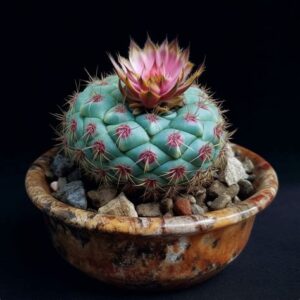In the sprawling tapestry of the plant kingdom, the Acanthocalycium cactus emerges as a curious thread, intertwining beauty with resilience. Hailing from the arid landscapes of South America, particularly Argentina, this genus captivates enthusiasts and casual observers alike. With a distinctive morphology and a palette of flowering hues, Acanthocalycium serves as a testament to nature’s artistic capability, reminding us that even within austere environments, life flourishes in myriad forms. Let us delve deeper into the enchanting essence of Acanthocalycium, exploring its varieties, care requirements, and growth patterns.
There is something admirable about a cactus, particularly the Acanthocalycium. It embodies a paradox of vulnerability and strength—a fortress adorned with spines yet capable of delicate blooms adorning its surface. Its structure comprises globular to cylindrical stems covered in a protective layer of spines, reminiscent of a knight donning their armor. This formidable exterior belies the soft, vibrant flowers that erupt in a riot of colors during the appropriate seasons, further enchanting the beholder.
The appeal of the Acanthocalycium cactus lies not only in its visual splendor but also in its adaptability. Each variety presents unique characteristics and requires distinct care routines—yet all thrive in similar arid conditions. Below, we embark on an informative journey through the captivating varieties of Acanthocalycium, their distinctiveness, as well as the essential care they demand for optimal growth.
Distinct Varieties: Nature’s Masterpieces
Acanthocalycium is home to an array of varieties, each akin to an artist’s brushstroke. Among these, the most recognized include:
Acanthocalycium violaceum
This particular variety is often viewed as the quintessential representative of the genus. Acanthocalycium violaceum showcases a robust form, characterized by its globular shape that can reach heights of 6 to 12 inches. Its surface is adorned with spines that vary in color from bright yellow to reddish hues, creating a striking contrast against its green body. When in bloom, the cactus produces flowers that range from white to deep purple, each petal a canvas of exquisite artistry.
Acanthocalycium glaucum
With its distinctive bluish-green complexion and towering stature, Acanthocalycium glaucum captures attention with its exquisite presence. This variety can grow up to 12 inches tall and exhibits prominent ribs adorned with long, white spines. The flowers bloom in shades of bright yellow, presenting a stunning burst of color above its regal form and beckoning pollinators to dance among its petals.
Acanthocalycium thionanthum
For those seeking a rarity, Acanthocalycium thionanthum stands out with a uniquely cylindrical shape. Although somewhat less common, its intricate ribbing and compact form entice collectors. The flowers bloom in shades of red, providing a striking visual against the cactus’s body. This variety, while requiring slightly more diligent care, rewards the attentive gardener with an extraordinary showcase of nature’s artistry.
Essential Care: Nurturing the Resilient
To cultivate Acanthocalycium cacti successfully, understanding their basic care requirements is paramount. Like a budding artist, a discerning gardener must apply the right palette of elements to stimulate growth and thrive.
Light Requirements
Acanthocalycium cacti have evolved to harness the energy of the sun, thriving best under bright, indirect sunlight. Ideally, they should bask in at least 6 hours of light daily. Too much direct sunlight may scorch their delicate green bodies, so providing partial shade during the most intense hours is advisable. Alternating exposure helps them develop a robust constitution while maintaining the vibrant color and health of their spines and flowers.
Temperature and Humidity
Adapted to life in arid landscapes, Acanthocalycium cacti flourish in warm temperatures. Ideal ranges can oscillate between 70°F and 90°F during the day, while maintaining cooler temperatures at night is beneficial for their metabolic processes. While these cacti can endure brief dips to 50°F, prolonged exposure to chill can stunt growth.
Humidity levels should be minimal, as excessive moisture can lead to rot—a cactus’s arch-nemesis. By mimicking their natural habitat, gardeners can replicate conditions that encourage flowering and growth.
Soil and Watering
The significance of soil cannot be overstated, as it serves as the medium through which nutrients flow. Acanthocalycium cacti thrive in well-draining soil, ideally comprised of a mix of sandy and gritty substances. Pre-packaged cactus soil can often provide the necessary drainage, but a homemade blend of potting soil, sand, and perlite ensures optimal conditions.
Watering practices are of utmost importance. Overzealous watering is a frequent blunder, with roots suffering from moisture retention. During the growing season (spring and summer), allow the top inch of soil to dry out before watering. In fall and winter, reduce watering further, sparingly granting moisture only when absolutely necessary. This cyclical drought and nourishment imitate their native cycles, allowing the cacti to flourish.
Fertilizer Application
To invigorate growth, nourishing the soil with a balanced, diluted cactus fertilizer during the active growing season can catalyze flowering. Utilizing a liquid fertilizer helps to enhance mineral uptake, ensuring the Acanthocalycium cactus receives the vital nutrients required for sustained vitality. However, it’s crucial to refrain from fertilizing during dormancy, as excess nutrients can foster rot.
Growth Patterns: From Seedling to Splendor
Understanding the lifecycle of Acanthocalycium involves recognizing the stages of development, much like appreciating the metamorphosis of a butterfly. Each phase provides insights into the plant’s needs and potential.
Seed Germination
To cultivate Acanthocalycium cacti from seed is a rewarding venture that requires patience. Seed germination typically occurs in spring, facilitated by maintaining stable moisture and warmth. With appropriate conditions, seeds will sprout in several weeks, emerging as tiny green wonders. This initial stage demands care, particularly in avoiding overwatering, which can jeopardize fragile seedlings.
Vegetative Growth
As the seedlings mature, they enter the vegetative growth phase. During this time, careful attention to light, temperature, and watering will influence their growth trajectory. Ideally, young Acanthocalycium cacti should be repotted into larger containers to allow expansion—a metaphor for the inevitable growth they will experience if nurtured correctly.
Flowering Stage
In due course, mature cacti will enter the flowering stage, actively displaying nature’s artistry through vibrant blooms. The flowers typically emerge in late spring to early summer, providing both aesthetic allure and pollination opportunities for beneficial insects. The delicate nature of these blooms is juxtaposed beautifully against the cactus’s robust exterior—a stunning testament to the duality of nature.
Conclusion: A Living Work of Art
In essence, cultivating Acanthocalycium cacti transcends mere gardening; it becomes a symbiotic relationship between the gardener and the plant. With careful attention to their distinct varieties and tailored care regimens, these resilient wonders reward the devoted caretaker with an extraordinary spectacle of nature’s resilience and beauty. Like an artist unveiled, Acanthocalycium serves as both an ornament and a testament to life’s tenacity, bringing the desert’s unique charm within the reach of garden enthusiasts worldwide.





Leave a Comment